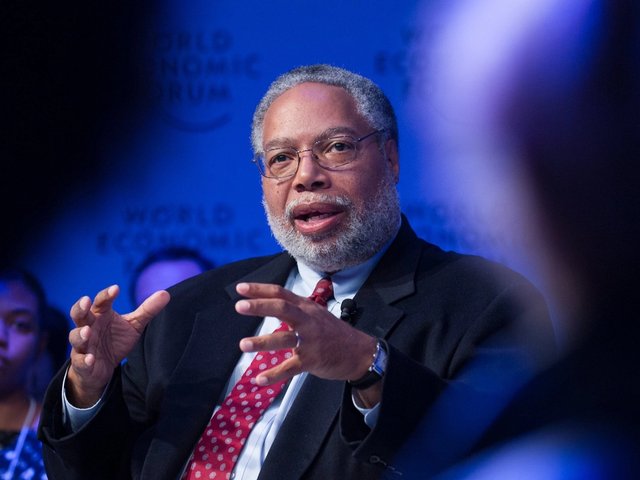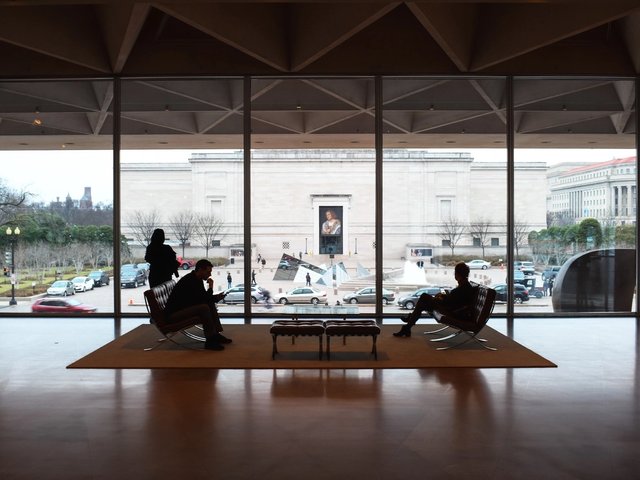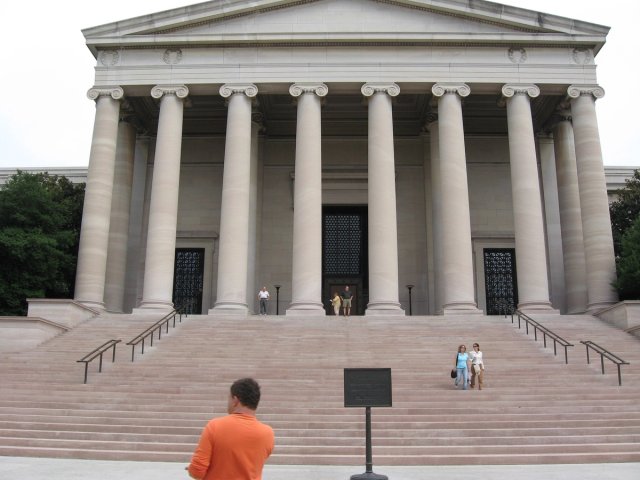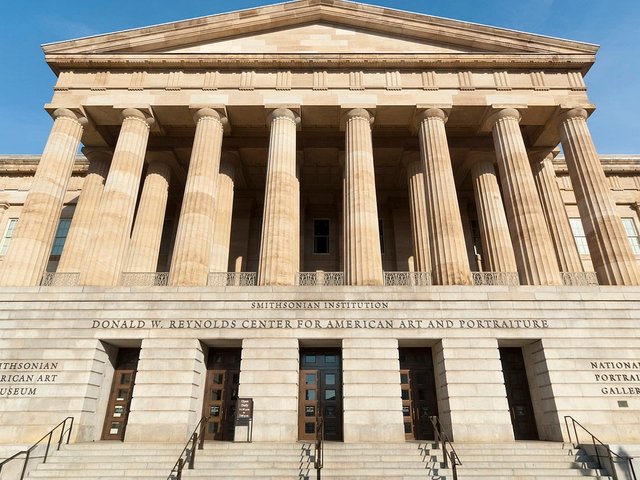Following the end of the longest government shutdown in the history of the United States on Wednesday night (12 November), federal agencies have begun to reopen, as have the museums in and around Washington, DC, that largely depend on federal funding.
The National Gallery of Art (NGA), which had been closed since 4 October, reopened its West Building and sculpture garden on Friday (14 November), with the rest of the campus due to reopen on Saturday (15 November).
“We are still determining the impacts of the temporary closure on the museum,” a spokesperson for the NGA tells The Art Newspaper. “At this stage, we remain focused on resuming normal operations and welcoming our visitors back to the museum.”
The NGA’s special exhibition The Stars We Do Not See: Australian Indigenous Art, which was organised with the National Gallery of Victoria in Melbourne and originally scheduled to open on 18 October, will now open 15 November; its closing date will remain 1 March 2026, as it is due to travel next to the Denver Art Museum, the Portland Art Museum in Oregon and the Peabody Essex Museum in Massachusetts through spring 2027.
Three parts of the Smithsonian Institution—the National Museum of American History and the National Air and Space Museum in Washington, and the Steven F. Udvar-Hazy Center in Virginia—also reopened Friday. On Saturday, another five branches of the Smithsonian—the National Museum of African American History and Culture, the National Museum of African Art, the National Museum of Asian Art, the National Museum of Natural History and the National Zoo—will also reopen. All the institution’s remaining public venues, research facilities and museums (including the New York branch of the National Museum of the American Indian and the Cooper Hewitt, Smithsonian Design Museum, both in Manhattan) will reopen on 17 November.
“A few exhibition openings have been postponed,” a Smithsonian spokesperson tells The Art Newspaper, including the Smithsonian American Art Museum’s exhibition Grandma Moses: A Good Day’s Work, which was originally scheduled to open on 24 October. The spokesperson added that the shutdown did not affect the expected 2028 opening of the Bezos Learning Center, a facility under construction at the National Air and Space Museum that was made possible by a $200m donation from the Amazon founder Jeff Bezos.
The Smithsonian receives around 53% of its overall funding (which totaled $1.09bn in fiscal year 2024) via appropriations determined by the US congress. The NGA receives the bulk of its funding from the federal government; in its congressional-funding request for fiscal year 2025, it sought more than $215m in government funds.
Both institutions have faced significant pressure since the beginning of Donald Trump's second term and opted to shutter their diversity offices shortly after the president signed an executive order targeting such efforts. Trump subsequently targeted the Smithsonian, tried to fire the director of its National Portrait Gallery Kim Sajet (she subsequently resigned), and called for a special review of activities at eight of its museums, though the institution has said that it will continue carrying out its own internal review of exhibitions and programmes.
While these federally funded institutions are reopening relatively quickly and smoothly, another high-profile art project that depends on federal approval and funding has fallen even further behind schedule because of the 43-day shutdown. With the opening of the 2026 Venice Biennale less than six months away, the US has not yet announced its representative. A project by the sculptor Robert Lazzarini had been selected but then fell through, according to the Washington Post. Several outlets have reported that the Utah-born, Mexico-based sculptor Alma Allen has now been selected, though a formal announcement has been delayed due to the shutdown.






